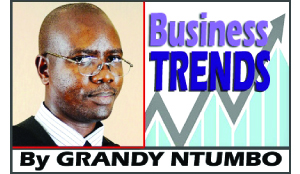 LARGE scale retailers globally now appear to rely heavily on price promotions than ever before.
LARGE scale retailers globally now appear to rely heavily on price promotions than ever before.
Marketing media are now flooded with advertisements which usually pronounce price reductions and promotions.
The issue of price promotions in retail business has attracted considerable debate, with industry experts and retail managers arguing on the effects in the immediate to short term on revenue targets, longer term profitability, supply chain costs and ultimate effect on brand loyalty.
For some time now, I have taken keen interest in these Pricing Promotions especially in large retailers like Mass discounters (Game Stores), Shoprite, Pick and Pay and Spar among many others.
In the recent past, I have had business chats with Business Executives of some leading retail businesses and hopefully in the next edition, I will feature a pleasant business experience that I had with one of the retail shops.
Many retail experts globally have openly expressed that “sales price promotions are inseparable from retail business, and that as far as retail business is concerned, the name of the game is price promotion”
Essentially, some Large Zambian retailers usually use markdowns, loss leading and bundle pricing in their retail promotions.
From the onset it is important that we exemplify a few of such price reductions before we consider their effects.
Markdowns are denoted by advertising campaigns with price reductions on a wide range of products in store for all customers.
Additionally, another form of price promotion is Loss Leading. This tactic entails applying a steep discount on selected items to lure current and new customers.
Loss leaders are known for selling overstocked items, consequently creating increasing patronage to their stores, and generating brand awareness.
On the other hand, our large retailers at times use a tactic of: “buy one, get one free” deal or a “two for the price of one”.
This tactic, known as bundle pricing, makes customers feel that they are getting an additional incentive for every Ngwee that they are paying.
This has an effect of luring customers to buy higher priced items once they are in the store
Bundling products is a great way to generate a higher perceived value for a lower cost and consequently enticing customers.
Thanks to ongoing price promotions in our retail stores. This certainly has a way of attracting shopping traffic and enumerating revenue targets..
With so many wide spread price promotions, does it mean that price is the only variable that customers are sensitive to?
Why are marketers tearing down other marketing concepts by pronouncing less of brand loyalty and more of price sensitivity to customers?
Price Promotions essentially encourages short term thinking rather than outlining more strategic aspects of marketing such as brand loyalty.
Every time a marketer sells a product at a discount, he or she sends a dangerous message to customers to make purchases based on price rather than foster brand loyalty.
Recent studies further reveal that a huge number of promotions only have fleeting effects and have no buying – behavioral change effects on customers.
Experience clearly shows that after a promotion runs its course, customers immediately return to their old buying patterns and sales drop back to usual patterns.
And for retailers, promotions can often do more harm than good.
Let’s take an example of a certain retail outlet which stocks more than one brand of washing detergents:
The promotion of one washing detergent from a stock of about four brands of washing detergents, may actually depress a supermarket’s overall washing detergent revenues as washing detergent consumers will temporarily shift to the cheaper brand on promotion.
Usually, a retailer may soon notice that buyers shun purchasing a heavily promoted item once it returns to its normal higher price.
As a caution, “not all that glitters is gold” customers must also take extra caution when buying goods that are on price promotion, especially food stuffs.
When it comes to food stuffs, one must carefully check the quality and expiry dates of perishable goods.
In some cases I have noticed that foodstuffs which may be nearing the end of their estimated shelf life may be the ones whose prices may be reduced as a way to clear them.
In this case the retailer may only be applying business decision: a best of the worst case scenario; by minimizing a loss, rather than incurring it absolutely.
Consequently, an impulse driven customer would end up buying undesirable quantities of an item whose shelf life is about to expire.
Every promotion increases manufacturer revenue and depresses retailer revenue in the short term but has no persistent effect for either party.
We have discussed a number of price promotions and their benefits and pitfalls.
It is clear that Price promotion periods inevitably increase sales volume and on the other hand, deepen sales troughs in between sales.
Additionally, frequent sales promotions tend to numb customer response over time as customers increasingly become less trustful of retailers when they run more frequent promotions.
Businesses should always be wary of the fact that the competitive battle on price is a surest race to the bottom and should therefore harness other strategies.
For comments e-mail: ntumbograndy@yahoo.com Mobile +260977403113 +260955403113
The author is the Managing Consultant at GN Grant Business Consultant, a fellow of the Association of Chartered Certified Accountants (ACCA), a Master of Business Administration (MBA) holder and a candidate for the Herriot Watt University (Scotland) Doctor of Business Administration (DBA)






